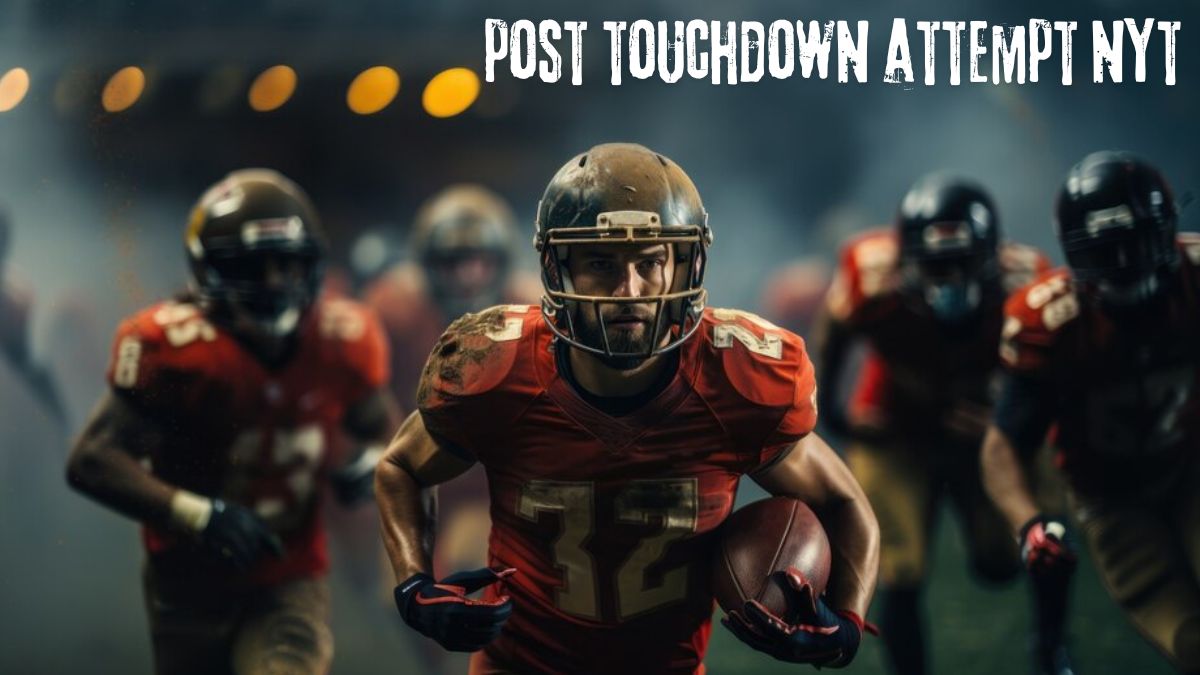GAMES
Unlocking the Potential of “Four Digits to Memorize”

In today’s fast-paced world, where information overload is a common challenge, the ability to remember important details is more crucial than ever. Memorization techniques have long been employed to enhance memory retention, and one such method that has gained traction is the use of “four digits to memorize nyt.” In this article, we delve into the intricacies of this technique, exploring its applications, benefits, and practical tips for implementation.
Understanding Memory Techniques
Before diving into the specifics of four-digit codes, it’s essential to grasp the fundamentals of memory techniques. Mnemonic devices, such as acronyms, visualization, and association, are tools used to aid memory recall. These techniques capitalize on the brain’s innate ability to remember vivid and meaningful information more effectively than arbitrary data.
The Power of Four-Digit Codes
Four-digit codes are sequences of numbers consisting of four digits to memorize nyt each, typically ranging from 0000 to 9999. Despite their simplicity, these codes hold significant potential in various contexts. From unlocking safes to setting passwords, four-digit codes are ubiquitous in modern society.
How to Create Memorable Four-Digit Codes
Crafting memorable four-digit codes involves a strategic approach. By associating each number with vivid imagery or personal meaning, individuals can enhance their recall ability. For instance, assigning words or phrases to numerical sequences can transform mundane combinations into memorable codes.
Applications in Everyday Life
The versatility of four digits to memorize nyt codes extends beyond conventional uses. In personal life, individuals can utilize these codes to remember important dates, phone numbers, or addresses. Moreover, in professional settings, four-digit codes can streamline processes and improve efficiency.
Memory Competitions and Techniques
Memory competitions serve as a testament to the remarkable capabilities of human memory. Competitors employ various techniques, including the memorization of long sequences of digits, to demonstrate their mnemonic prowess. Through rigorous training and dedication, participants hone their memory skills to extraordinary levels.
Improving Cognitive Functions
Engaging in memory training not only enhances memory retention but also contributes to overall cognitive function. Studies have shown that regular practice of memorization techniques can lead to improved concentration, problem-solving skills, and mental agility.
Challenges and Solutions
While memorization techniques offer numerous benefits, they are not without challenges. Distractions, information overload, and forgetfulness are common hurdles faced by individuals seeking to improve their memory. However, by implementing effective strategies such as repetition and spaced retrieval, these obstacles can be overcome.
Digital Security and Four-Digit Codes
In an era dominated by digital technology, the importance of secure passwords cannot be overstated. Four-digit codes play a crucial role in digital security, serving as PINs for bank accounts, access codes for electronic devices, and authentication codes for online platforms.
Ethical Considerations
As with any tool, mnemonic devices raise ethical considerations regarding privacy and data security. Users must exercise caution when employing memorization techniques to safeguard sensitive information and respect the privacy of others.
Future Trends and Innovations
The field of memory enhancement continues to evolve, driven by advancements in technology and neuroscience. From brain-computer interfaces to neurostimulation devices, researchers are exploring novel approaches to boost memory capabilities and unlock the full potential of the human mind.
Conclusion
“four digits to memorize nyt” offers a simple yet powerful method for enhancing memory retention and cognitive function. By leveraging mnemonic techniques and embracing the versatility of four-digit codes, individuals can unlock new realms of memory mastery and achieve greater success in both personal and professional endeavors.
FAQs
How can I improve my memory using four-digit codes?
Practice associating each digit with memorable images or words to create vivid mental representations.
Are there any limitations to using four-digit codes?
While effective for many purposes, four-digit codes may not be suitable for securing highly sensitive information.
Can children benefit from learning mnemonic techniques?
Yes, mnemonic devices can be valuable tools for children to improve their memory and academic performance.
What is the best way to incorporate four-digit codes into my daily routine?
Start by identifying areas where you frequently use numerical sequences, such as passwords or phone numbers, and begin substituting them with memorable four-digit codes.
Is there any scientific evidence supporting the effectiveness of memory techniques?
Yes, numerous studies have demonstrated the efficacy of mnemonic devices in enhancing memory retention and cognitive function.

GAMES
Post Touchdown Attempt NYT: A Deep Dive into NFL and College Football Strategies

As analytics and technology continue to progress, they will certainly impact future patterns in post touchdown attempt nyt efforts. In order to make better strategic choices, teams will depend more and more on data-driven insights. Teams may need to rethink their strategy for these crucial plays in light of the possibility of rule changes.
What is a Post Touchdown Attempt NYT?
When a team scores a touchdown and wants to go for extra points, they call it a post touchdown try. Kicking an additional point or trying a two-point conversion are the two main choices. Game circumstances, team strategy, and faith in the play’s execution are a few of the variables that go into making the decision.
Rules and Regulations
Kickoffs in the National Football League typically start at the 15-yard line, but clubs also have the option to start at the 2-yard line for two-point conversions. The three-yard line is the starting position for both the extra point kick and the two-point conversion in college football.
NFL Rules
In the NFL, teams can kick an extra point from the 15-yard line, making it a 33-yard attempt. Alternatively, they can try a two-point conversion from the 2-yard line. These rules were adjusted in 2015 to add excitement and strategy to the game, making the extra point less of a guarantee.
You might also like:https://vapespen.com/
College Football Rules
College football follows similar rules but with a slight variation. The extra point attempt is kicked from the 3-yard line, making it a 20-yard attempt, while the two-point conversion is also from the 3-yard line. This subtle difference influences strategic decisions differently than in the NFL.
Differences Between Leagues
The primary distinction lies in the positioning of the extra point attempt, which impacts the likelihood of success. NFL kickers face a more challenging task, which can lead to more frequent two-point attempts compared to college football.
The Significance of the Post Touchdown Attempt NYT
The post touchdown attempt is crucial because it can determine the final outcome of a game. A successful extra point or two-point conversion can shift the momentum, create a decisive lead, or catch up to the opponent’s score.
Impact on Game Outcomes
A successful post touchdown attempt can be the difference between a win and a loss. In close games, every point counts, and the decision to kick or go for two can dramatically alter the game’s dynamics. Coaches must weigh the risks and benefits carefully.
Statistical Importance
Statistics show that the success rate for extra points is significantly higher than for two-point conversions. However, the two-point attempt, when successful, offers greater reward. Teams analyze these statistics to make informed decisions.
Strategies for Post Touchdown Attempts
Coaches carefully strategize post touchdown attempts by weighing the safer option of kicking an extra point, which has a higher success rate, against the riskier but more rewarding two-point conversion. The choice depends on various factors, such as the game’s score, time remaining, and team strengths.
Kicking an Extra Point
The traditional choice, kicking an extra point, is often the safer bet. NFL kickers have a high success rate for these attempts, though the recent rule changes have slightly lowered this percentage.
Two-Point Conversion
A two-point conversion is a higher-risk, higher-reward option. Teams usually attempt this when they need to make up ground or put extra pressure on the opponent. It involves running or passing the ball into the end zone from the 2 or 3-yard line.
Situational Decision-Making
Coaches consider the game’s context, the score, and their team’s strengths and weaknesses when deciding on a post touchdown attempt. Sometimes, analytics play a significant role, providing data-driven insights to support the decision.
Famous Post Touchdown Attempts in History
Some post touchdown attempts have become legendary, changing the course of important games and leaving a lasting impact on football history. Iconic moments include thrilling two-point conversions in crucial playoff games and Super Bowls, where teams gambled for victory instead of settling for a tie.
Memorable Moments
Post touchdown attempts have provided some of football’s most memorable moments. Who can forget the dramatic two-point conversions that turned the tide in playoff games or even Super Bowls?
Game-Changing Attempts
Certain games are remembered for their decisive post touchdown attempts. These pivotal moments are etched in fans’ memories, often defining seasons or even careers.
Statistical Analysis
According to the numbers, the success rate of two-point conversions in the NFL is approximately 48%, while the success rate of extra points is around 94-55%. Teams may use these numbers to weigh the possible benefits and drawbacks of each choice, which in turn informs coaching decisions. With the rise of analytics, two-point tries have seen a little uptick in recent years.
Success Rates
Historically, the success rate for extra points hovers around 94-95% in the NFL, while two-point conversions succeed approximately 48% of the time. These statistics help inform strategic decisions.
Trends Over the Years
Over the years, there’s been a slight increase in two-point attempts, particularly as analytics become more integrated into football strategy. Coaches are more willing to take calculated risks based on statistical probabilities.
Technological Advances and Training
Modern training methods and technological advancements have greatly enhanced after touchdown efforts. Precision has been enhanced by the use of improved equipment, such as kicking tees and higher-quality footballs. Professional athletes may hone their craft at state-of-the-art training centers that mimic game situations.
Equipment Improvements
Modern equipment, from kicking tees to footballs, has evolved, aiding in the precision of post touchdown attempts. Technology in training facilities also plays a role, allowing players to simulate game conditions accurately.
Training Techniques
Training methods have advanced, with players focusing on specific drills to enhance their performance during these crucial moments. Mental conditioning is also emphasized, preparing players to handle high-pressure situations.
Psychological Aspects
Because players are under so much pressure to score in these crucial times, the mental components of post-touchdown tries are significant. Extreme mental fortitude is required to deal with the pressure of knowing that the game’s result may be decided by a single kick or play. Teams often consult with sports psychologists to assist players in dealing with anxiety, improving concentration and composure under pressure, and developing routines to help them do just that.
Pressure on Players
The pressure on kickers and offensive players during post touchdown attempts is immense. These plays can define a game’s outcome, placing significant mental stress on the individuals involved.
Mental Preparation
Teams employ sports psychologists and mental conditioning coaches to help players manage stress and perform under pressure. Visualization techniques and routine development are common practices.
Coaching Perspectives
Complex strategic choices are required by coaches during post-touchdown tries. When deciding whether to go for a two-point conversion or kick an extra point, coaches must take into account the game’s context, team strengths, and real-time data. Being able to think on your feet and adjust to new circumstances is essential throughout this decision-making process.
Coaching Strategies
Coaches develop detailed strategies for post touchdown attempt nyt considering various game scenarios. These plans are often adjusted based on real-time game developments.
Decision-Making Processes
The decision to kick an extra point or go for two is a complex one, involving input from coaching staff, analytical teams, and sometimes even players. The process is dynamic and can change up until the last moment.
Fan Reactions and Cultural Impact
Fan reactions to post touchdown attempt nyt are often intense and passionate, reflecting the high stakes of these plays. Successful attempts can ignite celebrations, while failures may lead to frustration and debate.
How Fans Perceive Post Touchdown Attempts
Fans often have strong opinions on whether to kick or go for two. These decisions can be hot topics of debate, especially when a game’s outcome hinges on them.
Cultural Significance
Post touchdown attempts are more than just plays; they are part of football’s cultural fabric. They embody the sport’s strategic depth and the emotional highs and lows that fans love.
Media Coverage
Coverage of post-touchdown efforts by the media has a significant impact on public opinion and ups the stakes of the game. Experts analyze these plays and provide their thoughts on the choices and methods that went into them. Extra points and two-point conversions that are crucial to the game’s fate are often shown on the highlight reels.
How Post Touchdown Attempts Are Covered
Media coverage of post touchdown attempts highlights their importance. Analysts break down these decisions, providing insights into the strategies behind them.
Impact of Media on Public Perception
The media’s portrayal of post touchdown attempt nyt can influence public perception. Dramatic successes or failures are often magnified, shaping narratives around teams and players.
Future Trends
As analytics and technology continue to progress, they will certainly impact future patterns in post touchdown efforts. In order to make better strategic choices, teams will depend more and more on data-driven insights. Teams may need to rethink their strategy for these crucial plays in light of the possibility of rule changes.
Potential Rule Changes
The rules governing post touchdown attempt nyt may continue to evolve. Discussions about further changes aim to balance fairness and excitement in the game.
Evolution of Strategies
As analytics and technology advance, so too will the strategies for post touchdown attempts. Future approaches will likely be even more data-driven and precise.
Conclusion
A crucial part of football that requires planning, talent, and mental toughness are post-touchdown efforts. They have the power to change the trajectory of games and make spectacular moments. The complexity of these efforts will increase as the game develops, guaranteeing that they will continue to be an interesting part of football.
-

 LIFE STYLE3 months ago
LIFE STYLE3 months agoExploring the World: A Journey with myfavouriteplaces.org
-

 EDUCATION3 months ago
EDUCATION3 months agoλιβαισ: Unraveling the Cultural Enigma
-

 TECHNOLOGY3 months ago
TECHNOLOGY3 months agoUnlocking the Potential: Exploring the Power of GPT66X
-

 VAPE2 months ago
VAPE2 months agoRaz Vape: Revolutionizing the Vaping Experience
-

 VAPE2 months ago
VAPE2 months agoHush Absolute Vape: Elevate Your Vaping Experience
-

 HEALTH & FITNESS3 months ago
HEALTH & FITNESS3 months agoUnderstanding Blisterata: Causes, Symptoms, and Treatment
-

 HEALTH & FITNESS3 months ago
HEALTH & FITNESS3 months agoRedefining Culinary Experience with Intrepidfood.eu
-

 VAPE3 months ago
VAPE3 months agoUnderstanding the Lost Mary Vape Phenomenon



















